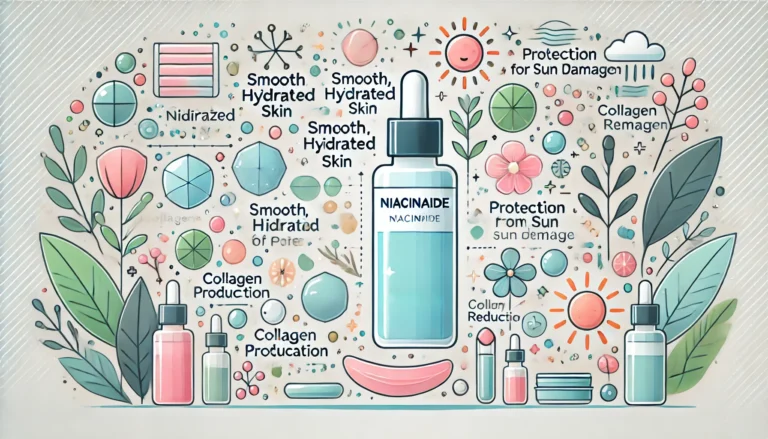Boost Skin Health: Microbiome’s Role in Acne & Aging
Imagine waking up in the morning, ready to face the day, only to find your skin acting up with unexpected breakouts or new wrinkles. It’s a common frustration shared by many, as achieving optimal skin health can feel like a never-ending puzzle. The quest for clear, youthful skin often leads to a myriad of skincare products and routines, yet finding the perfect solution remains elusive for most.
The goal is simple: to understand the underlying factors impacting skin health and harness this knowledge to improve it. Recent advancements in dermatological research have shed light on the critical role of the skin microbiome, a community of microorganisms living on the skin. These tiny residents are proving to be key players in skin conditions like acne and aging.
In this article, we will delve into the fascinating world of the skin microbiome, exploring its influence on acne and aging. By decoding the interactions between these microorganisms and our skin, we aim to uncover strategies that can lead to healthier, more radiant skin. Prepare to embark on a journey that bridges cutting-edge science with practical skincare advice.
Understanding the Skin Microbiome
The term “skin microbiome” refers to the diverse community of bacteria, fungi, viruses, and other microorganisms residing on our skin. It might sound unsettling, but these microscopic companions are essential to maintaining skin health. They act as a protective barrier, help regulate immune responses, and can even influence skin conditions.
Each person’s skin microbiome is unique, shaped by factors such as genetics, environment, diet, and lifestyle. The balance of this ecosystem is crucial; a disruption can lead to various skin issues. By understanding the skin microbiome, we can better appreciate its role in maintaining skin health and discover new ways to address skin-related concerns.
The Skin Microbiome and Acne
Acne is a common skin condition that affects people of all ages, particularly during adolescence. Traditionally, it has been attributed to excess oil production, clogged pores, and hormonal changes. However, recent research highlights the significant role of the skin microbiome in the development and management of acne.
Certain bacteria, such as Cutibacterium acnes, are naturally present in the skin microbiome. In a balanced state, they coexist peacefully with other microorganisms. However, an overgrowth of these bacteria can trigger inflammation, leading to acne breakouts. Understanding this relationship has opened new avenues for acne treatment, focusing on restoring microbial balance rather than merely targeting bacteria for elimination.
Strategies for Managing Acne Through Microbiome Balance
Addressing acne through the lens of the skin microbiome involves a holistic approach. Instead of aggressive treatments that may disrupt the microbiome, strategies that support microbial balance are gaining popularity. These include using probiotics and prebiotics, which promote the growth of beneficial bacteria and help maintain a healthy skin environment.
In addition, gentle skincare products that respect the skin’s natural pH and microbiome can be more effective in managing acne. Avoiding harsh chemicals and over-cleansing can prevent further disruption and support the skin’s ability to heal itself. Emphasizing a balanced diet and stress management also contributes to a healthier skin microbiome, potentially reducing acne flare-ups.
The Role of the Skin Microbiome in Aging
Aging is a natural process, but its effects on the skin are a common concern. Wrinkles, loss of elasticity, and uneven skin tone are often associated with aging. Recent studies suggest that the skin microbiome plays a significant role in how our skin ages.
As we age, changes in the skin microbiome can exacerbate signs of aging. A decline in microbial diversity, coupled with an increase in harmful microorganisms, can contribute to inflammation and skin barrier dysfunction. These factors accelerate the aging process, leading to more pronounced signs of aging.
Promoting a Youthful Microbiome
To combat the effects of aging, maintaining a healthy and diverse skin microbiome is crucial. This can be achieved through skincare routines that support microbial diversity, such as using microbiome-friendly products that include ingredients like ceramides and niacinamide. These ingredients help to fortify the skin barrier and promote a balanced microbiome.
Additionally, lifestyle choices such as a nutrient-rich diet, adequate hydration, and protection from environmental stressors like UV radiation can support a youthful microbiome. Incorporating probiotics and antioxidants in both diet and skincare can further enhance skin resilience and slow down the aging process.
The Future of Skincare: Microbiome-Based Solutions
The growing understanding of the skin microbiome is paving the way for innovative skincare solutions. Personalized skincare, tailored to an individual’s unique microbiome, is an emerging trend. By analyzing the skin’s microbial composition, products can be customized to address specific needs, offering more effective and targeted treatments.
Furthermore, ongoing research into the skin microbiome continues to reveal new insights that will shape the future of dermatology. As we learn more about these microscopic allies, we can develop more sophisticated strategies to enhance skin health, combat acne, and slow down the aging process.
In conclusion, the skin microbiome is a vital and dynamic component of our skin health. By acknowledging its role and nurturing it through informed choices, we can unlock the potential for healthier, more radiant skin at any age. As science progresses, the skin microbiome will undoubtedly remain at the forefront of skincare innovation, offering hope for those seeking solutions to the timeless challenges of acne and aging.



